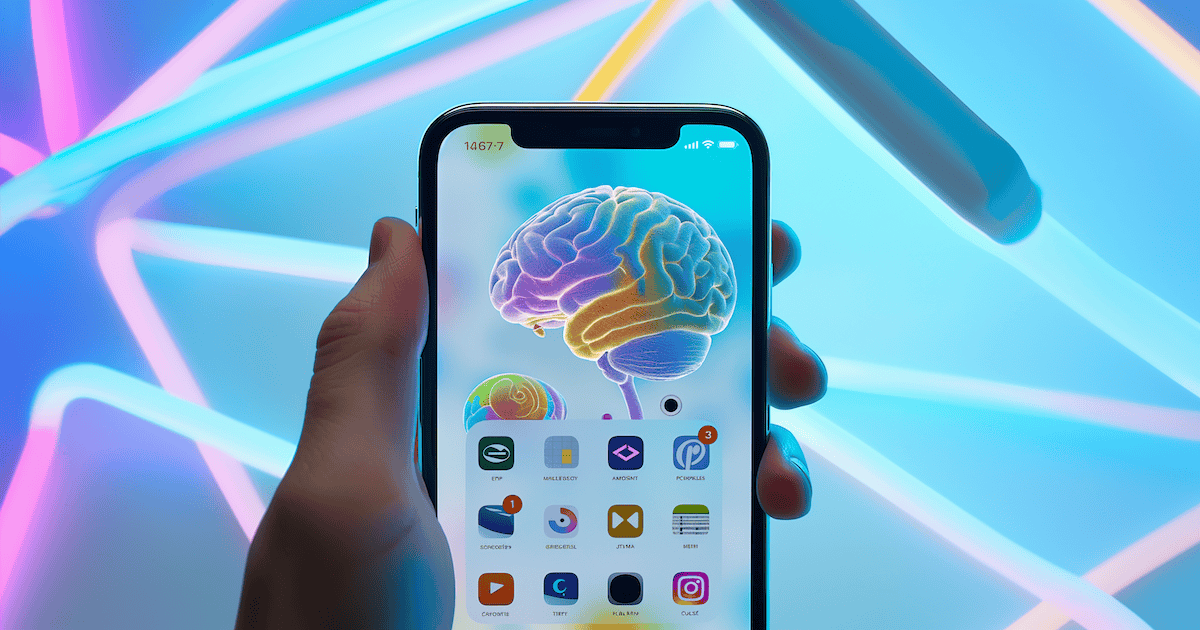
Yesterday brought some much anticipated details.
It’s one of the most important tech events of the year — Apple’s annual Worldwide Developers Conference.
And the focus was, of course, Apple’s product plans for artificial intelligence (AI).
The consumer electronics giant has been much maligned by the media for being “behind” with regards to AI development.
Which is why Apple CEO Tim Cook’s keynote was such an important event for the company.
The product announcements from the event have received a lot of coverage and excitement. They focused on the applications and how consumers will use the new technology.
But the announcements reveal to us a far more interesting story concerning Apple’s AI strategy… and how it will impact the rest of the industry.
We’ll get to that in a bit.
But first, let’s have a look at the new buzzword splashed all over the headlines: Apple Intelligence — Apple’s new AI-powered “personal intelligence system” designed for iPhones, iPads, and Macs.
As expected, Apple’s approach to incorporating AI into its products is woven into Apple’s existing applications, as opposed to having created something like a standalone Apple AI application running on a smartphone or computer.
This wasn’t a surprise, as Apple is known for the vertical integration of its products. It designs everything, right down to the semiconductors that power its consumer electronics… upon which its software applications run.
This tight integration is why Apple products work so well and provide such a compelling user experience.
Apple announced that it has developed and integrated AI technology into its upcoming software releases, scheduled for this fall in iOS 18 (smartphone operating system), iPadOS, and macOS Sequoia.
Integrating the technology into the operating systems is what enabled it to be useful across many software applications that run on Apple devices… potentially all of them.
A simple example of this new functionality is Writing Tools, which is available for use within Apple’s Mail, Notes, Pages, and other third-party applications.
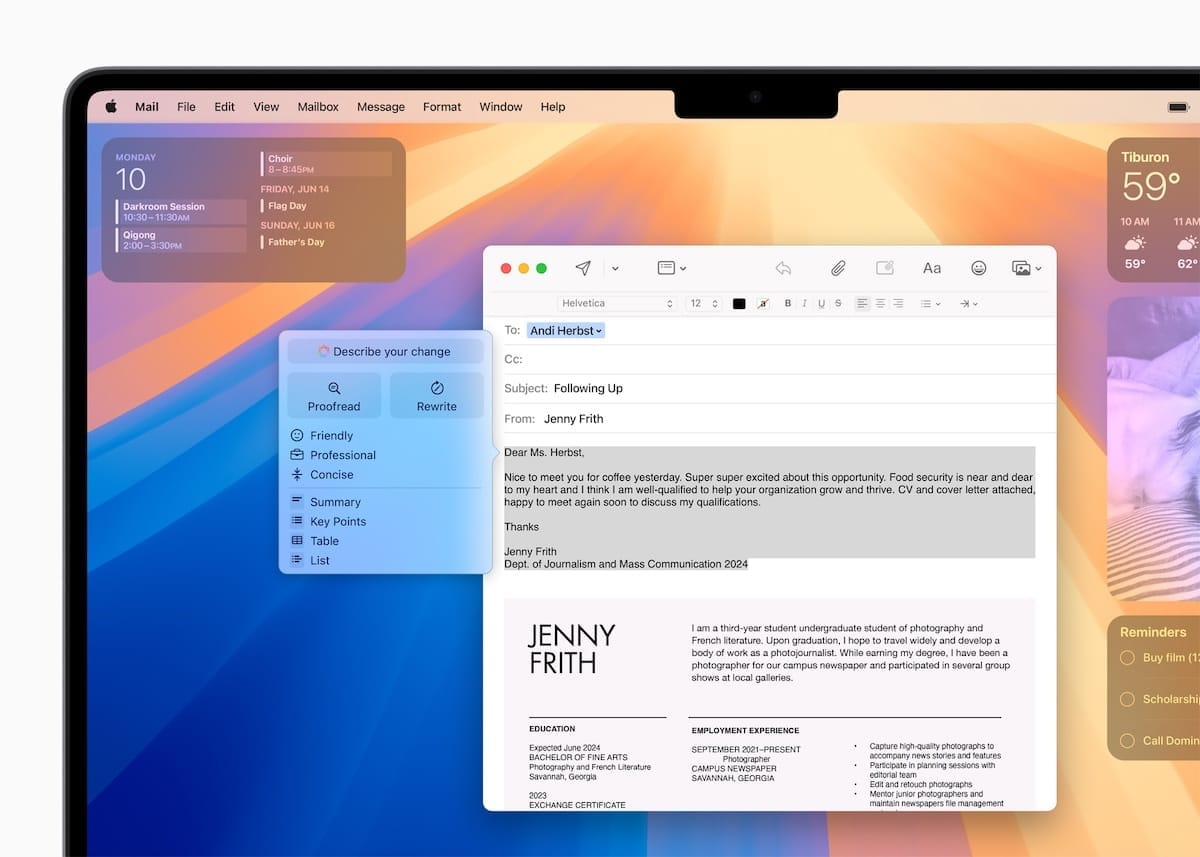
Shown above is a screenshot of the functionality. A user can simply highlight text and use the AI tool to proofread or rewrite an e-mail or document in different ways (friendly, professional, concise).
It can also summarize information from a long e-mail or document with the click of a button. This is all enabled with generative AI technology.
Apple’s AI also had the ability to gain contextual understanding of our information and interactions with others.
For example, its new category of Priority Messages has the ability to understand and prioritize time sensitive e-mails and messages so that we don’t miss them, and they are simple to find.

Priority messages will be grouped at the top of our inbox for simplicity. The same will be true of any important notifications.
And in the Notes and Phone applications, users will be able to record the audio of a meeting, class or seminar, have that audio transcribed, and then summarized in a second. I wish I would have had this feature when I was a student…
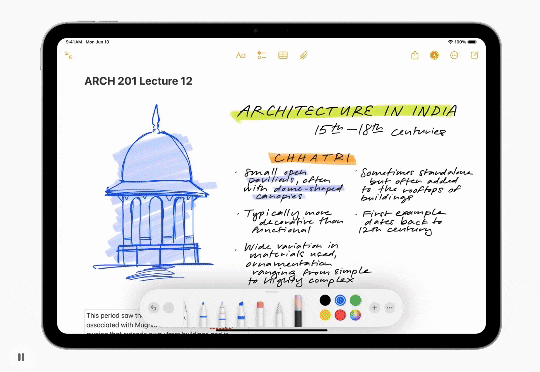
There are also some fun features like being able to use generative AI to create custom emojis, avatars, and AI-generated art that users will adopt quickly.
And the multimedia applications with Photos and creating memories will be a major hit given the incredible utility. As shown below, just prompt the AI to make a memory movie of “Leo learning to fish…” and the right photos/videos will be collected in seconds.
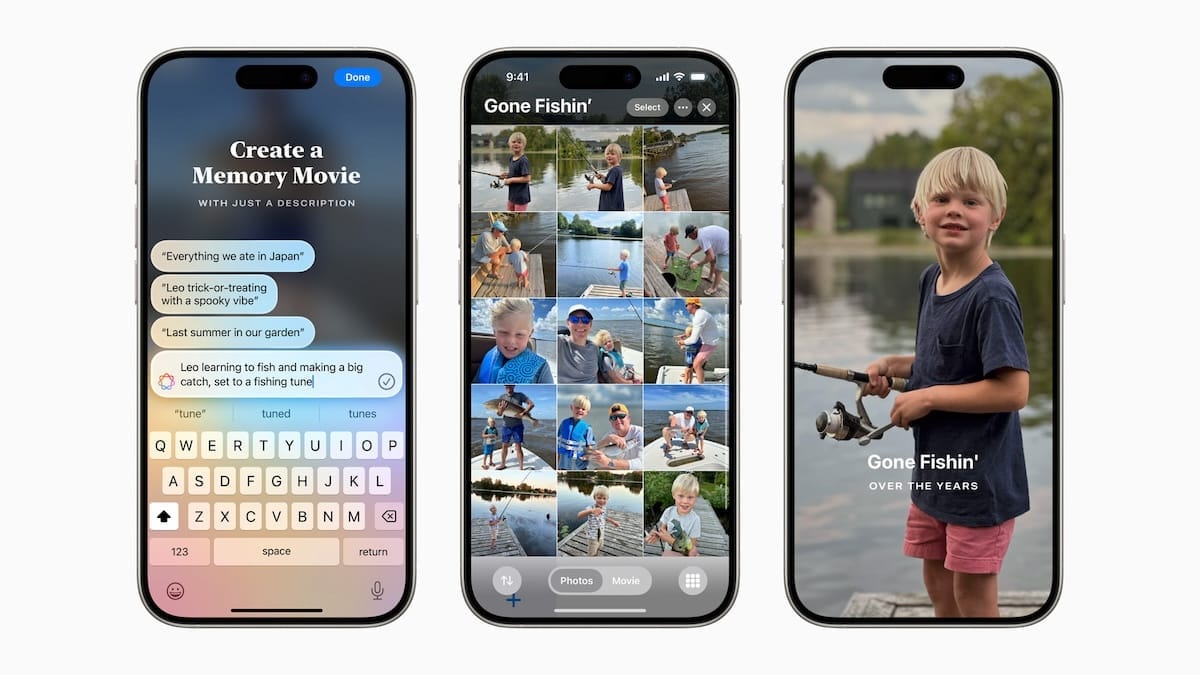
What’s very obvious is that Apple is intentionally focusing on the new features that AI is enabling, not on AI itself.
That’s the advantage of weaving AI into the operating systems. There’s no need for a standalone AI app — the technology is everywhere and available to be called upon by any application.
As usual, Apple is making this powerful technology accessible to software developers that build on Apple’s operating systems, which means that we’re all going be using AI throughout the day, but most of us won’t even realize it.
Apple’s product strategy will facilitate widespread adoption of artificial intelligence, with one simple software upgrade.
But there is a catch…
Apple’s new AI-powered features will only be available on the iPhone 15 Pro, 15 Pro Max, and iPads or Macs with M1 or later semiconductors.
Naturally, the new iPhone 16s scheduled for this fall will be able to support the new AI features.
That’s the rub. The A17 Pro chip in the iPhone 15 Pro and Pro Max, with its 6-core GPU, is the minimum requirement to run Apple Intelligence.
The new software in iOS 18 requires serious computational horsepower to deliver a compelling user experience, which is why the AI software won’t work on older Apple devices.
I would argue that because of this, Apple Intelligence is an even bigger reason to upgrade your Apple iPhone, iPad, and Mac then even the jump to 5G.
5G is fantastic and dramatically improves download speeds and results in lower latency (delay)…
But AI features will be directly felt and appreciated in the applications that users need and enjoy throughout the day.
And that includes Siri, Apple’s digital assistant that has historically had very limited utility.
But with Apple’s generative AI upgrade, Siri will become extremely useful.
Siri will be able to provide contextually relevant information, understand our history and interactions on Apple devices, and provide us personalized information based on that information.
This is the beginning of widespread adoption of personalized AI assistants, which I’ve written about extensively in Outer Limits, and before that The Bleeding Edge.
How is this possible?
Well, aside from the advanced semiconductor technology and generative AI, Apple’s software is designed to understand us through our e-mail, text, browsing, and interactions with other software applications.
We’ll be able to ask Siri, “What was that book that Lindsey recommended I read?” Or give a command like, “Send that photo of me in front of the Eiffel Tower to Eveliina.”
And we’ll have our answers. And tasks will be performed in less than a second.
Now, I’m sure that some of us are thinking about privacy concerns. After all, to have this kind of utility, Apple needs to scour through our interactions, communications, and other personal information so that it can understand us well enough to be useful.
This is where the hardware (semiconductor) requirements come into play.
Whenever possible, Apple’s software design allows for most of the AI functions to be run locally on device. This is opposed to having to send information back to a data center for processing. If it doesn’t leave the phone, the information stays private.
And in order to run AI locally, devices need to have enough computational horsepower to get the work done, which is why Apple had to draw the line at the iPhone 15 Pro and Pro Max.
And when Apple needs additional information or computing power to support a task, it uses Apple’s own Private Cloud Compute running on dedicated Apple servers (i.e. not outsourced to run on Amazon or Google servers).
This architecture is designed for two things: privacy and reduced costs. By keeping most of the computation on device, the information is also local and doesn’t need to be sent/received. And when using the iPhone, iPad, or Mac for AI processing, there is no need to incur costs for data center processing.
This design optimizes both the user experience, and Apple’s operating costs. Apple only has to fall back on its own Private Cloud when it needs to.
And when Apple Intelligence gets stuck with a user prompt, it offers up another option as backup: fall back to OpenAI’s ChatGPT, powered by the latest GPT-4o.
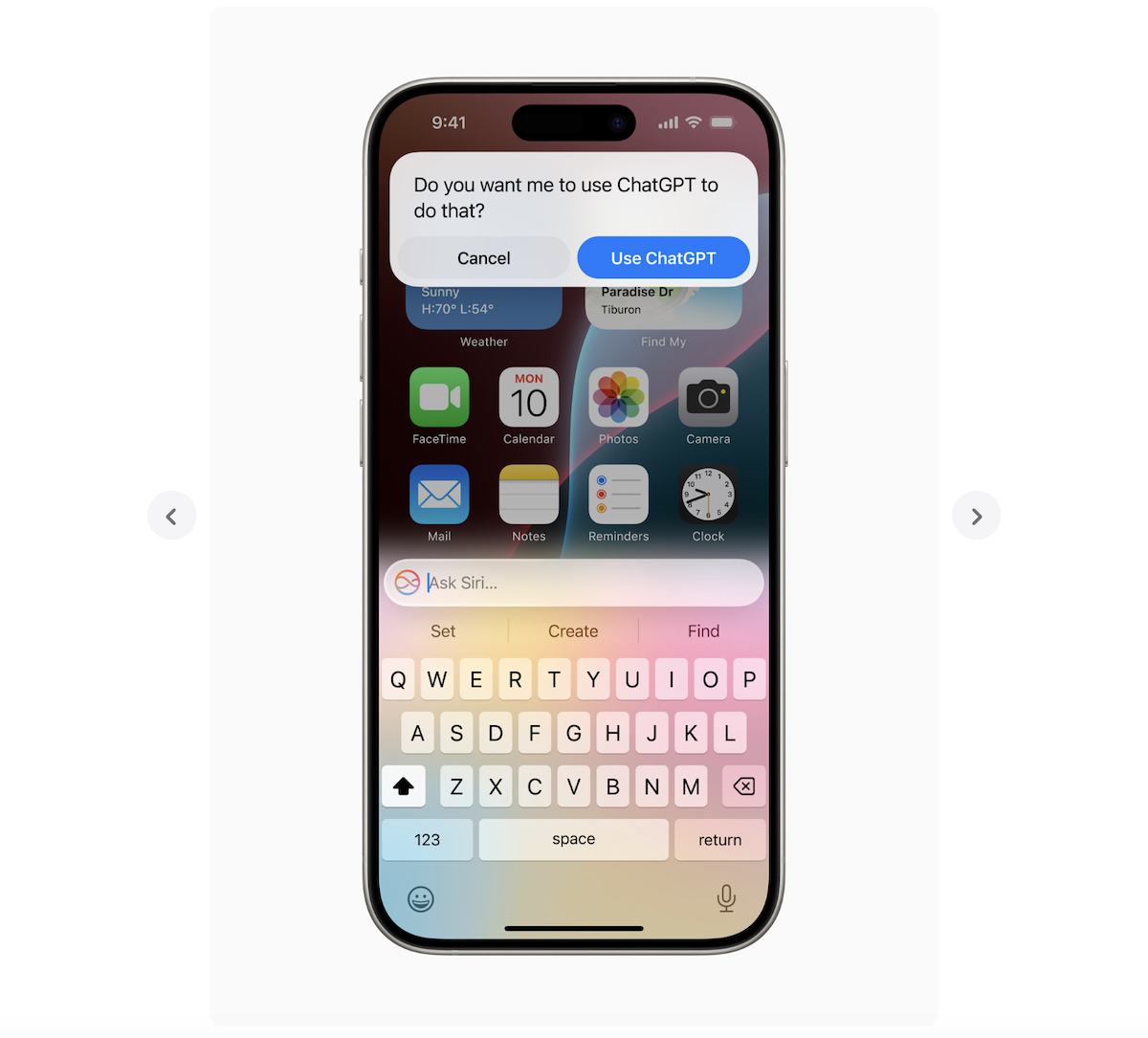
That’s right — the rumors proved to be true.
On May 14th, here’s what was happening, as I documented in Outer Limits — Is Google Doomed?…
The rumors have been swirling that a deal with OpenAI is pending. In the short-term, that would make perfect sense. Apple can integrate with GPT-4o APIs, and it can still call its voice assistant Siri, it will just have a major upgrade.
Apple will basically ask permission to use ChatGPT for a desired task. This puts the user in control of whether or not its information, photos, or documents are OK to be sent to OpenAI for processing.
This is an interesting solution that puts the degree of desired privacy into the users’ hands. But it’s not a perfect solution for all.
Elon Musk has already taken a stand against Apple’s planned incorporation of OpenAI’s ChatGPT with Apple’s iOS 18. And he’s not wrong.
Musk announced that he would ban the use of Apple devices at his companies if Apple launches with GPT-4o integrated with its operating system.
The issue isn’t just a Musk issue — it’s actually an issue that any corporation or government should be concerned about.
If an employee or executive prompts ChatGPT for help with sensitive government/company information, that information will be sent back to OpenAI for processing.
That means that OpenAI, a for-profit company, would have to be trusted with sensitive information. And that’s the problem.
And it doesn’t help that OpenAI was already found to have been programming bias and political narrative into its own generative AI.
While Musk may have been the first to speak out about this issue, its critically important to all.
Which leads me to an interesting point about Apple’s AI strategy…
Apple has written its own AI technology into its operating systems, enabling the use across any applications that run on Apple software (assuming the devices have up-to-date semiconductors). And it outsourced some of the more complex tasks to OpenAI’s ChatGPT.
But that’s easy to change.
If OpenAI becomes problematic, it can switch to Anthropic’s Claude, or Mistral, or even X’s Grok, which would make Musk quite happy, I suspect.
And by developing its technology in house, and outsourcing some of it, as opposed to acquiring a major artificial intelligence company, it stays out of regulatory crosshairs.
Case in point, the U.S. Department of Justice (DOJ) and the Federal Trade Commission (FTC) are now investigating Microsoft, OpenAI, and NVIDIA for anti-competitive practices in the AI industry.
Apple has already drawn attention from the DOJ for alleged anti-competitive practices in the smartphone market, but it hasn’t been mentioned in the DOJ/FTC lawsuit.
Most thought Apple was way behind and moving too slow on AI…
But in reality, it was carefully architecting its AI strategy and staying out of regulatory trouble. Calculated. Clever.
Apple has built one of the most successful distribution networks in history. There are more than 2.2 billion active Apple devices worldwide. But only a subset of those devices will be capable of running the new AI features found in the upcoming release of iOS 18 — features that, knowing Apple, will possess incredible utility and customer stickiness.
Soon the connected world will know about these features. And there will be great reason to switch over or upgrade…
Or miss out.
We always welcome your feedback. We read every email and address the most common comments and questions in the Friday AMA. Please write to us here.